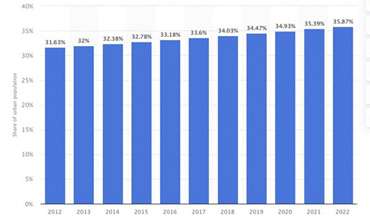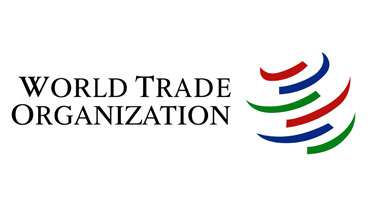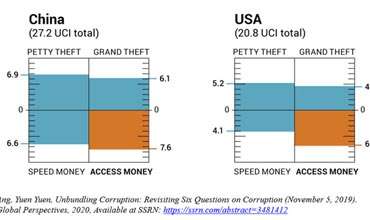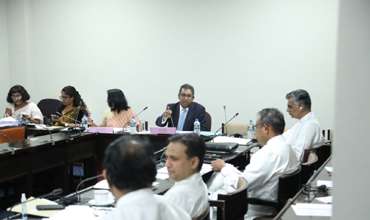Managing the HR under the New Normal
By Minoli Peiris & Dr. Manoj Samarathunga
COVID-19 outbreak is a global health and economic crisis spreading over the world. As a result, a large number of people are experiencing a loss of normality in their daily lives at work. Most employees lost their jobs and income, however many others continue to work even in pandemic situations. Employees have not been left out and even large-scale business organizations were on the incline of losing profits, which substantially impacted the security of their employment and jobs. The World Health Organisation stated that employers are required to implement shift patterns, teleworking, and other practices to reduce crowding by stepping up the situation. Employers learned how to employ flexible workers, which would be a huge battle won for human resource management in this post-pandemic era.
The HR department plays a vital role in ensuring the success of a business organization and driving towards the organisation's purpose and values. HR departments articulate the entire organisation's mission and meet a new set of organisational needs in this pandemic situation. HR departments' evolved and transformed across all aspects of the HR lifecycle.
Most organisations were initially unaware of experiencing a situation in which employees become expected to leave their offices and tend to complete tasks remotely from other locations or their homes. During the government-imposed lockdowns, business organisations inevitably adapted to continue work, assuring that main operations in support services were done remotely. Most employees suffer from job uncertainty, and the risk of infectious disease causes a deep psychological effect and emotional response as a result of the pandemic.
However, business organisations replicated what was done before the pandemic by translating existing processes into remote working contexts.
- Redesign the particular way of work performed and located to prepare for the new post-COVID-19 situation
- Structures and mechanisms are required to develop tasks and workplaces according to their needs, depending on the nature of the job and the requirements to perform it
- Business organisations were aligned with new processes and technologies
- The workplaces were redesigned using specific requirements that take into account, such as ensuring social distance, increasing the employee's scope of working hours, and occupational health and safety regulations
As mentioned in the Annual Report of the Central Bank of Sri Lanka (2020), the pandemic has brought an emerging rapidly for many organisations to reconsider the significance of participation, accessibility, and workplace. At the same time, the work from home (WFH) has challenges, as successful implementation of this approach depends on several factors, including shared responsibility, commitment, and mutual understanding between the employer and employee.
Managers and HR professionals who are inexperienced in remote working and work from home practices previously rake place new ways to engage, motivate, and communicate with their employees. Business organisations need to have a complete sense of what remote work involves. Instead, remote work may be structured such that employees work partially from home and partially in the workplace, according to a predetermined calendar or rotating schedules.
Mostly in the future workplace, technology is a concern for employees returning to work safely, due to the risk of future pandemics or the lack of vaccinations among the young employed population for COVID-19, where employers must define how employees arrive at their workplaces, as well as the related health and safety considerations, such as sanitation and social distance.
Remote working, WFH, flexible hours, and roster systems were all widely used as a result. Even though WFH had already been used in several sectors and jobs, it had become widely popular as a temporary solution of organisational continuity during the pandemic (CBSL, 2020). Remote working arrangements have some limitations and difficulties in terms of practical execution. To begin with, remote working arrangements would not be appropriate for all industries, job categories, or functional areas.
In Sri Lanka, the status of the impact of coronavirus on workplace transition is not so worse relatively. However, it is considered to some extent that cannot be ignored. Due to several difficulties with ICT infrastructure, ICT literacy, and manual processes and procedures, the efforts to prevent the spread of the COVID-19 pandemic were not entirely effective. Furthermore, given the current state of digitalisation, most public sector job functions are less suited to perform in WFH setups, as public services offered to the general public should be performed in person. Refer to the Table 1.

Source; Department of Census and Statistics, Computer Literacy Statistics – 2020 (First six months)
As stated in International Labour Organization (2020), the level of ICT literacy, required supervision, and the ability to perform work outside of the workplace in terms of adequate availability and quality of physical and ICT infrastructure and equipment, living arrangements, and other responsibilities of the employees should all be evaluated on a case-by-case basis.
Continuity of this pandemic situation, employees are suffering from difficulties of less ICT infrastructure, technical know-how, and poor internet connectivity issues, and significant skill shortage gaps for remote working initiatives Furthermore, it increases existing imbalances between several industries and job varieties. Additionally, more focus needs to be attention throughout this workplace transition.
- New approaches to communication and engagement should be implemented to sustain business culture and team cohesiveness while also reducing employee psychological stress.
- Keeping defined working hours should focus on the long-term adoption of WFH arrangements to avoid overworking-related long-term impacts on employees' physical and mental health, work-family conflicts and maintain an optimal level of productivity.
COVID-19 forced human resource management intervention towards social responsibility implementation. Employees tend to employ in remote working and, during the crisis, have seen a massive drop in absenteeism for physical work premises. The changing effect from workplace to remote work has limited the economic impact of the COVID-19 and has limited the further spread of the virus. However, several empirical evidence suggests that working from home in many jobs and industries provides limited opportunities.
Reviewing the growing importance of expanding the role of the HR department in this pandemic situation, it has been on the front lines, actively promoting attempts to make employees' lives easier as an essential service provider.
The HR department is responsible for addressing employee concerns and frustrations. They must review policies and procedures to reflect the new normal. HR department's involvement in the workplace is expanding rapidly as new conditions are implemented. Moreover, HR professionals might be responsible for improving the effectiveness and efficiency of an organization. Since the HR department serves as a mediator and link between senior management and employees during regular working routines, it may be an essential element of a business organization's crisis management efforts.
The HR department can support its employees by constructively using readiness efforts. In such a scenario, employees who have previously experienced and are aware of each other's strengths and limitations have a greater level of responsiveness to face continuing their work. Further, can identify the HR department's expanded role in four areas. Refer to the Figure 01.

The HR department should embrace the initiative to support and prioritise their employees' psychological and emotional well-being. Employees may experience anxiety and stress as a result of these unexpected events. The psychological needs and emotions of employees are prevalent during changes in the workplace. Changes in the workplace influence the emotional reactions of employees.
Many workers may be experiencing full-time WFH for the first time during the COVID-19 pandemic while simultaneously being isolated from coworkers, colleagues, and perhaps even family. Their daily lives have been interrupted, potentially causing further stress, anxiety, and physical and emotional hardships. When organisations suffer losses, there may be more shortages, layoffs, and terminations, prompting workers to experience increased anxiety, uncertainty, and insecurity, leading to depression.
Every HR department in a working setting tries to balance their individual needs with the demands of the work environment. With the use of various online platforms such as Hangout meets, Microsoft Outlook, webinars, Zoom cloud, Telegram, and others, industries and companies are obliged to Work from Home (WFH). Online platforms are being utilised to offer a range of services online to the employee-relations programmes that are usually part of Human Resource procedures.
Working from home has potential drawbacks for employers, such as making it more challenging to supervise employee work and possibly reducing productivity and morale if employees get too distracted and alienated from peers at home.
On the other hand, workers' productivity may improve if they are less stressed by commuting and less distracted by coworker interruptions. Employee turnover may be reduced as a result of their increased satisfaction. Remote working arrangements are a shared responsibility that requires the effort of both employers and employees to succeed. When adopting WFH agreements, both employers and employees should be practical, flexible, and aware of each other's circumstances.
Organisational strategic initiatives that can adapt to identify the HR department's compelling new role in the workplace transition such as:
- contacting workers frequently to ensure that they feel supported and being present, accessible, and willing to listen when employees require assistance
- establishing team chat groups using online methods or apps to create opportunities for collaborative interaction between groups
- responding appropriately to signs of worker distress and providing a contact point for workers to share their concerns
- during WFH, creating awareness of workers' responsibility to look after their own physical and mental health includes encouraging workers to keep physically fit, eat healthily, and walk outside for fresh air regularly,
- facilitate investments in telecommunicating infrastructure while bridging the geographic disparity, with high-speed broadband becoming less common in rural areas
- promoting flexible work arrangements for at least some hours per week in suitable locations can overcome reluctance to telework due to adherence to traditional working arrangements
- strive to evolve and improve remote worker training, policies, and support, such as introducing a payment to continue paying home office setups
- managing cybersecurity, compliance, and security, to guarantee that everyone has everything they need to work remotely, this work necessitates strong collaboration with departments such as finance and IT.
HR will also be in charge of figuring out how to keep businesses connected and company cultures healthy in the absence of crowded offices and frequent business travel.
- Keep focusing on the organisation's core objectives and align with them to keep employees engaged, actively promote employees for them to stay motivated
- solicit feedback from employees and create a platform to freely share their information, including frustrations and suggestions for improvements in a constructive manner
- communicating openly and honestly with employees and leaders
- examine connectivity mechanisms such as regular video conferencing, calls, and other meetings, assess the WFH infrastructure, facilities, and equipment, such as internet access and the availability of a reliable power supply, assess the effects which the employee's home conditions.
Nevertheless, given the current conditions, some flexibility may be required with the agreement of the management and the employee in concern, as long as all applicable laws, rules, and company policy are followed. Employers have a responsibility to offer a safe and healthy working environment, thus the home workplace should be secure. Employers are responsible for their employees' physical and mental well-being. Workers must also safeguard themselves and others and look after their safety, health, and emotional well-being.
Remote employment requires clear communication. Employees and managers at WFH should agree on how they will communicate. It is essential to realise that employees must be available to their superiors and coworkers during the consented work hours. Moreover, human resource professionals might have been responsible for strengthening the efficacy and efficiency of an organisation's operations since the human resources department performs as a mediator and link between management and the employees throughout regular work routines. Consequently, the HR department plays a crucial role in ensuring organisational success during the pandemic. HR can offer essential and exceptionally skilled contributions by taking the lead in redesigning the organisation, defining talent strategies, addressing well-being and work-life balance, administering human resource systems, and enabling rehabilitation to the workplace.
(The writers are attached to the Faculty of Management Studies, Rajarata University of Sri Lanka. They could be contacted at minolipeiris14@gmail.com)
-
Chanika
Thursday, 16 February 2023 05:47 AMvery valuable article .keep posting current HR changes.
Likes : 0 Dislikes : 0


















Leave Comments